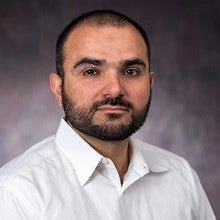It is in the popular perception that technological availability and regulation are the two most important factors in promoting mobile banking, defined here as the usage of mobile phones to send/receive money and to make payments. Two cases, however, defy this common perception and bring forth interesting questions as to what are the main driving factors for mobile banking. Let’s take a brief look at Russia and Somalia.

Russia
Russia has one of the highest rates of mobile phone subscriptions in the world (ranked 7th). Yet, it has one of the lowest rates of mobile banking (Table 1). Three factors could explain this.
The first is more of a cultural and social factor. Russians simply prefer using cash in their transactions than any other method of payment. Until as recently as 2012, many private sector employers paid the wages of employees in cash. Even as e-commerce has been growing rapidly in Russia (it grew by at least 25 percent between 2010 and 2011), the preferred method of payment for online orders is again cash-on-delivery. A survey conducted by MasterIndex shows that about 50 percent of Russians are skeptical towards debit and credit cards, even if they own one. Therefore, more than 83 percent of the 140 million-plus active bank cards are payroll cards and more than 90 percent of activities registered on these cards are ATM withdrawals on paydays.1 Preferring cash to electronic and mobile forms of payment may also be rooted in Russians’ distrust in 1) the technology’s secureness against financial fraud and identity theft, and 2) government’s ability and motives in tracking their financial transactions.
Second, Russian banks have been slow in developing electronic payment and mobile banking services. In mid-2012, only four of the 30 largest Russian banks provided a complete set of mobile banking services and only seven of these banks made money transfers between individuals possible. The rest provided very limited or no mobile banking services at all.2
The final factor relates to the regulation of the mobile banking industry. It was not until 2011 that a set of laws concerning electronic payments was put into effect, legalizing electronic payments and setting up the necessary legal and technological frameworks that made such payments possible.3 Government’s delay in recognizing the necessity of regulating electronic payments and banking systems has introduced uncertainties into this industry, therefore hindering its growth.
While each of these three factors can independently explain the low rates of mobile banking in Russia to some degree, it is the combination of them and their reinforcing nature that has hindered the development of a vibrant mobile banking and a non-cash economy in the world’s eighth largest economy and a country of 143 million people. As a result, cash will remain the main method of payment in the foreseeable future in Russia while payments and transfers through mobile phone will continue to be at depressed levels compared with most countries with similar levels of education, wealth, mobile phone penetration rates, and technological advancements.4
Somalia
Although Somalia has the fourth lowest mobile penetration rate in the world, it ranks 1st and 3rd globally in the percentage of adults using mobile phones to pay bills and send/receive money, respectively. This somewhat contradictory outcome is mainly driven by Somalia’s largest telecom company: Hormuud Telecom Somalia Inc. or HORTEL. In an effort to respond to the plummeting security and economic conditions in Somalia, HORTEL launched ZAAD mobile banking services through which individuals could transfer money to other subscribers, facilitating shopping and paying for utility and telephone bills without carrying cash. This has proved to be an attractive option for Somalis who have been facing worsening security conditions over the past decade.
Furthermore, ZAAD has made it possible for hundreds of thousands of Somalis to receive remittances from their family and friends abroad, therefore saving lives in this conflict-torn country. With more than $1 billion USD in value per year (more than 70 percent of Somali GDP), remittances have been the backbone of the war-torn economy. Without ZAAD mobile phone payment service, the effect of these remittances would be minimal. ZAAD has made it possible for remittances to be transferred across the country with a push of a button and with no risk for the sender or receiver, making it possible for thousands of people across Somalia to gain access to basic food items and healthcare.5
Concluding Remarks
When it comes to mobile technology and mobile banking, Russia and Somalia are diametrically opposite to each other. Despite being one of the poorest countries in the world, having one of the lowest cell phone penetration rates and lacking the involvement of government or financial industry, Somalia has one of the highest mobile financial transaction rates in the world. By contrast, although Russia surpasses Somalia in a heartbeat in terms of income, technology, and education, its mobile banking rates have remained at extremely low levels even in the face of government support. It seems that while technology and regulation have minimal roles in creating these opposite outcomes, cultural view toward cash, security conditions on the ground, and the trust of the public in the secureness of mobile banking technology are the main driving factors. Therefore, alongside technological and regulatory requirements, countries that are contemplating the possibilities and potentials of mobile banking in their economies need to be mindful and pay closer attention to the specific local conditions and cultures that could hinder or promote the advancement of mobile banking in their economies.
(Author’s Note: This piece is part of the analysis for the forthcoming 2014 Global Financial Development Report on Financial Inclusion, which covers mobile banking and other related topics in greater detail.)



Join the Conversation